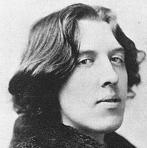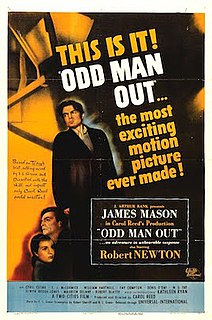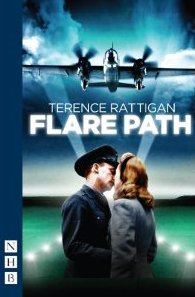The Play - 1975 and post-1975 versions
The Sanctuary Lamp centres on four central characters - Harry Stone, a Jewish strongman who, having been sacked from the circus, has gone freelance, Francisco, the Irish juggler who was sacked with him, Maudie, a young girl and the Monsignor who presides over the Church in which Harry takes refuge.
In the original 1975 version the play unfolds over three acts. The first begins outside the Monsignor's church with Harry begging before hiding inside when Francisco appears, searching for him. As Harry finds himself listening to the Monsignor's sermon, Francisco makes an exhibition of himself, hurling abuse at the Catholic faith. After he is ejected, Harry and the Monsignor meet and, in an act of kindness towards a man in need, the Monsignor offers Harry the job of caretaker in the church. This Act is almost entirely omitted in the post-1975 version which begins with Harry's meeting with the Monsignor.
Both versions share the action of the remaining two acts. As Harry shelters in the church it emerges he has not only been sacked from the circus but has walked out on his troupe of freelancers which includes Francisco, Olga, his wife and a dwarf called Samuel. Harry has rejected them because of an affair Francisco has had with Olga.
In the church Harry befriends a waif-like young girl, Maudie, who is also sheltering in the church in the belief that somehow she will find forgiveness for some of the terrible things that have happened to her. Harry undertakes to protect Maudie - largely because she reminds him of his own daughter, Teresa, who died of consumption. Their plans are ruined when Francisco appears in search of his old friend. As the two men confront each other lies and self-deceits are stripped away and all go through their own dark night of the soul. But, having purged themselves of the past, the three resolve to go back into the world the next day, somehow reconciled and able to find their own private visions of redemption.

William Joseph Shields, known professionally as Barry Fitzgerald, was an Irish stage, film and television actor. In a career spanning almost forty years, he appeared in such notable films as Bringing Up Baby (1938), The Long Voyage Home (1940), How Green Was My Valley (1941), Going My Way (1944), None but the Lonely Heart (1944) and The Quiet Man (1952). For Going My Way (1944), he won the Academy Award for Best Supporting Actor and was simultaneously nominated for the Academy Award for Best Actor. He was the older brother of Irish actor Arthur Shields. In 2020, he was listed at number 11 on The Irish Times list of Ireland's greatest film actors.

The Abbey Theatre, also known as the National Theatre of Ireland, in Dublin, Ireland, is one of the country's leading cultural institutions. First opening to the public on 27 December 1904, and moved from its original building after a fire in 1951, it has remained active to the present day. The Abbey was the first state-subsidized theatre in the English-speaking world; from 1925 onwards it received an annual subsidy from the Irish Free State. Since July 1966, the Abbey has been located at 26 Lower Abbey Street, Dublin 1.

The history of Irish theatre begins with the rise of the English administration in Dublin at the start of the 17th century. Over the next 400 years this small country was to make a disproportionate contribution to drama in English.

Hugh O'Flaherty CBE, was an Irish Catholic priest and senior official of the Roman Curia, and significant figure in Catholic resistance to Nazism. During World War II, the monsignor was responsible for saving 6,500 Allied soldiers and Jews. His ability to evade the traps set by the German Gestapo and Sicherheitsdienst (SD), earned O'Flaherty the nickname "The Scarlet Pimpernel of the Vatican".
Tom Murphy was an Irish dramatist who worked closely with the Abbey Theatre in Dublin and with Druid Theatre, Galway. He was born in County Galway, Ireland and later lived in Dublin.
Events from the year 1975 in Ireland.
Events from the year 1968 in Ireland.

Odd Man Out is a 1947 British film noir directed by Carol Reed, and starring James Mason, Robert Newton, Cyril Cusack, and Kathleen Ryan. Set in a Northern Irish city, it follows a wounded Nationalist leader who attempts to evade police in the aftermath of a robbery. It is based on the 1945 novel of the same name by F. L. Green.
Sinéad Moira Cusack is an Irish stage, television and film actress. Her first acting roles were at the Abbey Theatre in Dublin, before moving to London in 1975 to join the Royal Shakespeare Company. She has won the Critics' Circle and Evening Standard Awards for her performance in Sebastian Barry's Our Lady of Sligo.
A Whistle in the Dark is a play by Tom Murphy that premiered on September 11, 1961 at the Joan Littlewood's Theatre Royal, Stratford East, London, having been rejected by the Abbey Theatre, Dublin. It then went on to be a West End hit. Murphy was twenty-five years old at the time.

Ciarán Hinds is an Irish actor. A versatile performer who often plays villainous roles in feature films such as The Sum of All Fears, Road to Perdition, Munich, There Will Be Blood, Harry Potter and the Deathly Hallows – Part 2, Tinker Tailor Soldier Spy, Frozen, Silence, Red Sparrow, Justice League, First Man, Frozen II & The Man In The Hat.
The Gigli Concert is a play by Irish playwright Tom Murphy premiered at the Abbey Theatre, Dublin, in 1983 and widely regarded as his masterpiece.
Conversations on a Homecoming is a 1985 play by Irish playwright Tom Murphy. Premiered by the Druid Theatre Company, Galway, Ireland in a production directed by Garry Hynes. As one of the great Irish plays set in a pub, its influence can be seen in more recent plays such as The Weir by Conor McPherson.

John Crowley is an Irish film and theatre director. He is best known for the films Brooklyn (2015) and his debut feature, Intermission (2003), for which he won an Irish Film and Television Award for Best Director. He is a brother of the designer Bob Crowley.

Jimmy Murphy is an Irish playwright living in Dublin. He is a former writer in residence at NUI Maynooth (2000–01), a member of the Abbey Theatre’s Honorary Advisory Council, a recipient of three Bursaries in literature from the Arts Council/An Chomhairle Ealaíon and was elected a member of Aosdána in 2004.
Macdara Ó Fátharta, Irish actor, is most famous for his role as the villainous publican Tadhg Ó Direáin on the long-running Irish language TG4 drama, Ros na Rún.

Flare Path is a play by Terence Rattigan, written in 1941 and first staged in 1942. Set in a hotel near an RAF Bomber Command airbase during the Second World War, the story involves a love triangle between a pilot, his actress wife and a famous film star. The play is based in part on Rattigan's own wartime experiences.

Harry Brogan was an Irish actor often in comic roles. He was part of the Abbey Theatre from 1939 - 1976.
Alan Gilsenan is an Irish writer, filmmaker and theatre director. His most recent work include the cinema documentary Meetings with Ivor, the feature film Unless, based on a novel by Carol Shields and The Meeting, which he wrote and directed and premiered at the 2018 Dublin Film Festival.
Philip O'Sullivan is an Irish actor with contributions to Irish arts and culture through his roles and performances in theatre, on film and on television. O'Sullivan has been involved with the Abbey Theatre Ireland since the 1970s. In 1975 he appeared in an Abbey Theatre production of a play by Irish playwright Teresa Deevy called Katie Roche where he played the part of Michael Maguire, this production ran for 21 performances.








